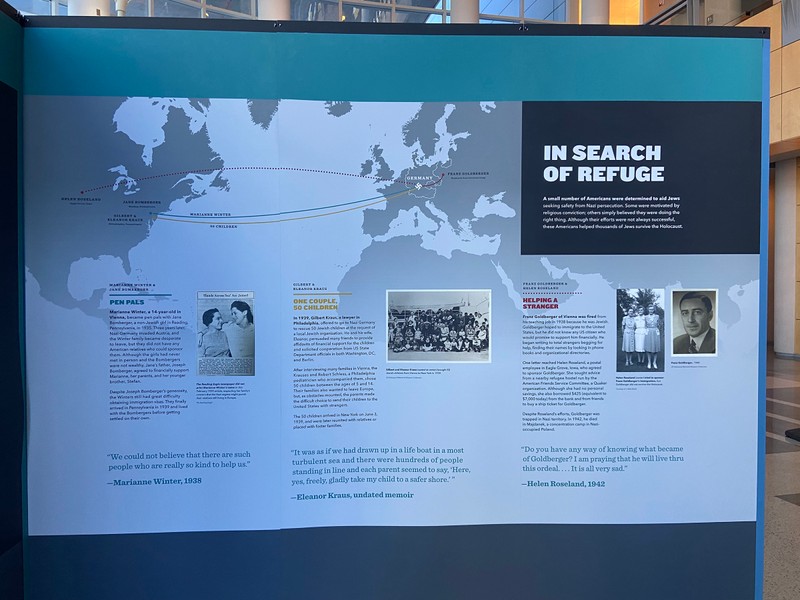In Search of Refuge (Americans and the Holocaust)
Introduction
Author-Uploaded Audio
In Search of Refuge (Americans and the Holocaust)
Text-to-speech Audio
Somewhere between 180,000-220,000 refugees fleeing Nazism were able to immigrate to the United States between 1933 and 1945. Most of them needed help, either from American aid organizations or from individual Americans who were willing to either help family members or even support a total stranger. One such example is the story of Marianne Winter and Jane Bomberger, which you can read more about here. In 1938, after Nazi Germany annexed Austria, Marianne Winter, a teenager in Vienna, wrote to her pen pal, Jane Bomberger, who lived in Reading, Pennsylvania [pronounced “Redding”]. Marianne asked her friend if she knew a rich man who might be able to sponsor the Winter family in their attempt to immigrate to the United States. Jane went to her father, and although their family was not wealthy, they offered to sponsor all four members of the Winter family. Immigration was still difficult, but the Winters were lucky to find a family as generous as the Bombergers, whom they had never met. Jane and her family even welcomed the Winters into their home in Reading, until they could find their own apartment.
As we have seen, American responses to the refugee crisis varied.
Images
In Search of Refuge panel (Americans and the Holocaust)

Backstory and Context
Text-to-speech Audio
Metropolitan Library System is one of 50 U.S. libraries selected to host AMERICANS AND THE HOLOCAUST, a traveling exhibition from the U.S. Holocaust Memorial Museum that examines the motives, pressures, and fears that shaped Americans’ responses to Nazism, war, and genocide in Europe during the 1930s and 1940s.
The Americans and the Holocaust exhibit will be on display at the Downtown Library, along with a series of related special events from Thursday, January 5 to Sunday, February 12.
Based on extensive new research of that period, Americans and the Holocaust addresses important themes in American history, exploring the many factors — including the Great Depression, isolationism, xenophobia, racism, and antisemitism — that influenced decisions made by the U.S. government, the news media, organizations and individuals as they responded to Nazism. This exhibition will challenge the commonly held assumptions that Americans knew little and did nothing about the Nazi persecution and murder of Jews as the Holocaust unfolded.
Drawing on a remarkable collection of primary sources from the 1930s and ’40s, the exhibition focuses on the stories of individuals and groups of Americans who took action in response to Nazism. It will challenge visitors to consider the responsibilities and obstacles faced by individuals — from Franklin Delano Roosevelt to ordinary Americans — who made difficult choices, sought to effect change, and, in a few cases, took significant risks to help victims of Nazism even as rescue never became a government priority.
Americans and the Holocaust was made possible by the generous support of lead sponsor Jeannie & Jonathan Lavine. Additional major funding was provided by the Bildners — Joan & Allen z”l, Elisa Spungen & Rob, Nancy & Jim; and Jane and Daniel Och. The Museum's exhibitions are also supported by the Lester Robbins and Sheila Johnson Robbins Traveling and Special Exhibitions Fund, established in 1990.
Sources
United States Holocaust Memorial Museum. Accessed January 5th, 2023. https://www.ushmm.org/.
American Library Association. Accessed January 5th, 2023. https://www.ala.org/.
